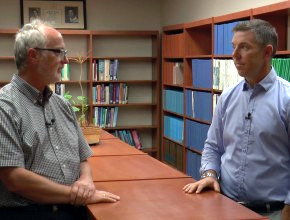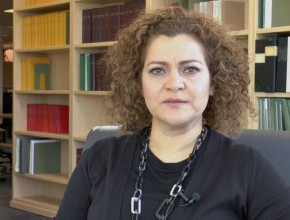References
Jolly SS, Cairns JA, Yusuf S, et al; TOTAL Investigators. Randomized trial of primary PCI with or without routine manual thrombectomy. N Engl J Med. 2015 Apr 9;372(15):1389-98. doi: 10.1056/NEJMoa1415098. PubMed PMID: 25853743; PubMed Central PMCID: PMC4995102.Wallentin L, Becker RC, Budaj A, et al; PLATO Investigators, Freij A, Thorsén M. Ticagrelor versus clopidogrel in patients with acute coronary syndromes. N Engl J Med. 2009 Sep 10;361(11):1045-57. doi: 10.1056/NEJMoa0904327. PubMed PMID: 19717846.
Related McMaster Textbook of Internal Medicine chapters
Jolly SS, Mulloy A, Budaj A, Bednarz B. ST-Segment Elevation Myocardial Infarction (STEMI). In: McMaster Textbook of Internal Medicine. Kraków: Medycyna Praktyczna; 2017.Jolly SS, Mulloy A, Budaj A, Bednarz B. Non-ST-Segment Elevation Myocardial Infarction (NSTEMI). In: McMaster Textbook of Internal Medicine. Kraków: Medycyna Praktyczna; 2017.
Roman Jaeschke: Good morning. Welcome to another edition of McMaster Perspective. Our today’s guest, Doctor Sanjit Jolly, who is at a different location, is an author of a recent paper in the New England Journal of Medicine talking about thrombectomy in acute myocardial infarction (MI). Doctor Jolly, I wonder if we can start with a general question. Thrombectomy was investigated recently in a number of different conditions. I wonder if you could tell us about your study: who were the patients, what was the intervention, what were the results, do these results solve the dilemma, is the issue closed or is there still something to investigate?
Sanjit S. Jolly: It is my pleasure to be here and talk about thrombus aspiration in ST-segment elevation myocardial infarction (STEMI). Roman, thank you for inviting me. We performed the largest trial of manual aspiration thrombectomy in STEMI. The hypothesis or background of this is that in STEMI the coronary artery is blocked with a thrombus. For years we have been opening these up with balloons and then placing stents, but one of the major limitations is that the clot goes downstream and blocks the microvasculature, so in somewhere in the range of 5% to 10% of cases we really have a suboptimal result because of clot moving downstream, and these patients do much more poorly.
A really appealing idea was that before we open up the artery with the balloon and stent, maybe we can suck out the clot and then place the stent and prevent distal embolization of thrombus and potentially improve outcomes. There was a single-center trial, published a number of years ago, which suggested that this therapy may reduce mortality by half. Guidelines have changed, this became a class IIA recommendation, everybody has started doing it. And then a number of us thought, “You know what? This was too good to be true. There are very few things we do in medicine that reduce mortality in half.” So we designed the TOTAL trial. This was a trial of nearly 11,000 patients, a large, simple trial. Patients with STEMI coming from primary percutaneous coronary intervention (PCI) to one or two strategies: routine aspiration thrombectomy – sucking out the clot – versus standard angioplasty and stenting.
What was of interest is that we did not see a benefit, we did not see a reduction in cardiovascular death, recurrent MI, cardiogenic shock, or class IV heart failure – that was the primary outcome at 6 months. But the flipside is that we saw a significant increase in stroke with routine thrombectomy at 30 days, which was the primary safety outcome. One of the questions is, why would you see stroke when you are sucking out clot. And one of the concerns is that especially if your guide catheter is not fully engaged when you pull out the clot from the coronary artery, it can go elsewhere. Stroke was relatively infrequent in this study, but nevertheless this is an important issue. As a result of this study, the American College of Cardiology (ACC)/American Heart Association (AHA) guidelines have updated the recommendations and provided routine thrombectomy in class III recommendations, [which means they were] not recommended.
This is really an important study and it suggests that routine thrombectomy is not beneficial. The caveat, of course, is that we did allow bailout thrombectomy in our standard treatment arm and this occurred in about 1 in 20 cases. So there will be a small proportion where you cannot get the vessel opened otherwise, but as a routine strategy it is not the right approach.
RJ: An additional question: as you know, thrombectomy became quite an intervention in cerebrovascular diseases, in ischemic stroke. What makes it different in one condition in which thrombus occurs, cerebrovascular disease, versus another condition, MI?
SJ: There has been a number of studies published, relatively small, suggesting either improved functional recovery, perhaps improved mortality, with thrombus retrieval using different devices in addition to thrombolysis or fibrinolysis. I think one of the important things is that the brain is a very sensitive organ to embolization. The heart may be more resilient. That may have been why we saw different outcomes.
RJ: Doctor Jolly, you are talking about your own study and thrombectomy in MI. I wonder if I could use your presence today to talk in more general terms about the most important aspects of today’s management of STEMI.
SJ: I would say probably the first recent advance has been antiplatelet therapy. We have new antiplatelet agents, including ticagrelor. These are P2Y12 antagonists that are rapid acting and more potent. They have been shown in the PLATO trial to reduce cardiovascular mortality. They are associated with higher bleeding risk, but [still they] really have been an advance in STEMI care.
The second, of course, is primary PCI, which has been around for some time, but I think the delivery of primary PCI, the rapid access, the system’s management has really transformed the outcomes. In the 1990s, you saw mortality somewhere in the range of 10% in STEMI, and now you are seeing mortality reduced by about half, somewhere in the range of 2% to 5% in modern STEMI trials and STEMI registries.
So, those are two important advances. One is a system’s and one is a medication advance.
RJ: Doctor Jolly, thank you for exploring those issues. As you know, [McMaster Perspective episodes] are not necessarily for cardiology specialists, so I would again like to use your presence here to highlight what in your opinion are the most important issues in the management of non-ST-segment elevation myocardial infarction (NSTEMI). What is important for noncardiologists?
SJ: In terms of NSTEMI, the antiplatelet agent ticagrelor was also shown to be a benefit in the PLATO trial, so it still remains an important advance in NSTEMI management.
The second important advance in both NSTEMI and STEMI is the advent of newer generation drug-eluting stents. They are associated with improved outcomes, lower rates of stent thrombosis, and lower rates of restenosis. We used to worry that when we placed drug-eluting stents – while we were preventing restenosis – we were concerned about some late effects in terms of late stent thrombosis. The newest generation drug-eluting stents have been shown to be safer than those first-generation drug-eluting stents. Moreover, [they] should be safer than bare-metal stents [in terms of stent thrombosis]. So this has really been an advance in PCI care.
Thanks very much, Roman!
 English
English
 Español
Español
 українська
українська






